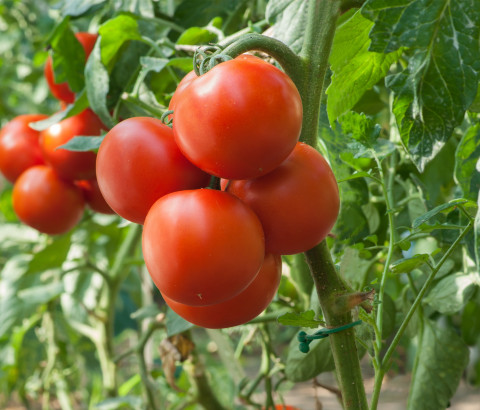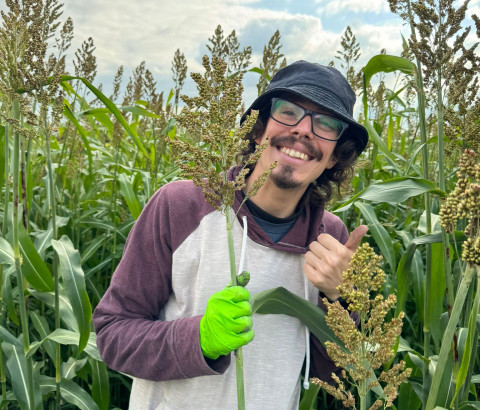Microbiële Ecologie
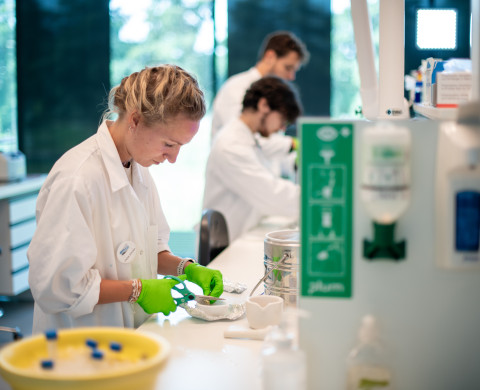
The overall aim of the ME-department is to understand the diversity and functions of microorganisms in natural and managed ecosystems. We focus on two major research areas:
- the role of microorganisms in biogeochemical cycles and greenhouse gas emission
- ecology and evolution of soil and plant-associated microorganisms
We use an interdisciplinary approach, combining microbiology, molecular biology, chemistry, modelling and computational methods to study the taxonomic and functional diversity of bacteria, archaea, fungi (including yeasts) and viruses. We closely collaborate with various national and international universities, institutes, and diverse stakeholders. Our goals are to advance the mechanistic understanding of the multipartite relationships between microorganisms and their environment, and to contribute to the development of new strategies for sustainable management of natural and man-made ecosystems.
We are actively involved in each of the three NIOO-wide research themes:
- Biodiversity: with the development of new ‘omics technologies, we have become even more aware of the vast, yet largely unknown diversity of microorganisms in natural and managed ecosystems. The ME-department studies microbial diversity and functions in national long-term ecological field sites (LTERs) as well as internationally such as the Amazon forest, the Andes Mountains and the Galapagos Islands. We use an interdisciplinary approach to illuminate the ‘microbial dark matter’ and to understand its impact on ecosystem functioning. Key questions are how soil bacteria and fungi interact in decomposition of recalcitrant organic matter and what the underlying diversity of chemical communication is within soil microbial communities and between microorganisms and plants. For soil and plant-associated viruses (including bacteriophages), we investigate the functional implications of their genome diversity and their fascinating role as guardians of plant and microbial biodiversity.
- Climate change: microorganisms are key drivers of global nutrient (carbon, nitrogen) cycles, thereby catalyzing the emission of specific greenhouse gases such as nitrous oxide and methane. We integrate(meta)genomic, isotopic and biogeochemical approaches to: a) identify key microorganisms, genes and pathways involved in these processes, and b) assess their distribution, functioning and controls in various ecosystems, including lakes, peatlands, forests and agricultural soils. The ME department adopts this knowledge to pinpoint major biogeochemical indicators of environmental disturbance and to steer microbial communities to minimize greenhouse gas emissions.
- Sustainable use of land: ME research has shown that microorganisms living on and inside plants are drivers of plant growth and health. To harness the largely unexplored functional diversity, we investigate how plants under stress recruit beneficial microorganisms for protection and how introduction or augmentation of soil microorganisms can be used as a sustainable practice to minimize fertilizer and pesticide use to enhance soil quality. We developed the concept of microbiome ‘rewilding’, which posits that plant health can be improved by reinstating key members of the diverse (ancestral) microbiota that were lost through domestication. To this end, we go back to the centers of origin of the wild relatives of our crop species to identify the ‘missing microbes’ and their beneficial traits.
Facilities
Biogeochemical cycles
Functional ecology of microbial communities involved in biogeochemical cycles.
Microbial community ecology & environmental genomics
Farming soil microbial community linked to N and P (re)cycles to provide nutrients to plants, soil quality and N2O mitigation.
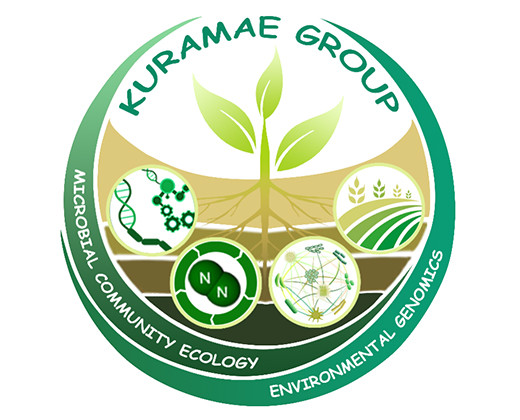
Chemical ecology
The chemical ecology of soil and plant-associated microbes
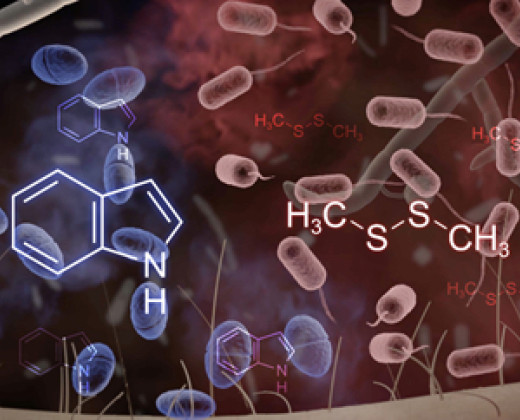
Virus ecology and evolution
Exploring the diversity, evolution and ecosystem impacts of plant-associated viruses.
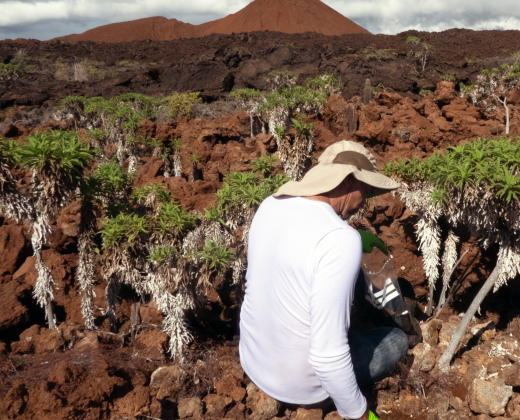
Back to the Roots
Diversity & functioning of microbiomes of wild and domesticated plants.

Phyllosphere yeast ecology & genomics
Diversity, functions and interactions of phyllosphere yeasts associated with two plant species: the globally cultivated wheat and the endemic Scalesia species of the Galápagos Islands.
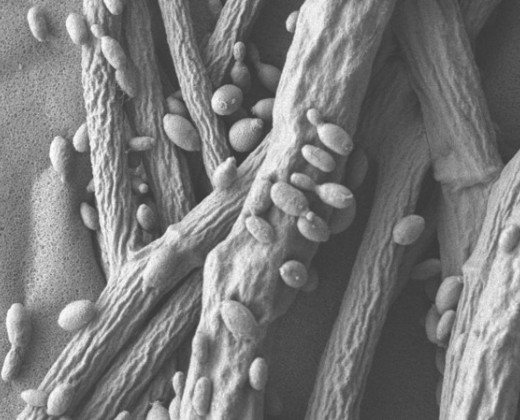
Medewerkers
-
Prof. Jos Raaijmakers PhD
- Functie
- Afdelingshoofd

-
Dr. Paul Bodelier
- Functie
- Senior Researcher

-
Dr. Viviane Cordovez
- Functie
- Senior Researcher

-
Prof. dr. Paolina Garbeva
- Functie
- Senior Researcher

-
Prof. dr. ir. Eiko Kuramae PhD
- Functie
- Senior Researcher

-
Dr. Mark Zwart
- Functie
- Senior Researcher

Peer-reviewed publicaties
Disentangling the molecular mechanisms of disease suppression by endophytic Flavobacterium sp. 98
Unveiling diversity and adaptations of the wild tomato Microbiome in their center of origin in the Ecuadorian Andes
Fate of C and N from pretreated organic amendments in soil
Greater influence of eukaryotes on carbon degradation potentials than prokaryotes along an elevation gradient
The soil-plant-human gut microbiome axis into perspective
Legume integration into rice cropping systems buffers topsoil functional potential against microbial diversity loss
The effects of ecological interactions and distinct conjugation rates on the invasion of a conjugative plasmid in bacterial communities
Microbial engineering of soil structure
Essential and dispensable domains of DivIVA for walled growth in filamentous Actinomycetota
The novel GlcNAc 6-phosphate dehydratase NagS governs a metabolic checkpoint that controls nutrient signaling in Streptomyces
Spatial Prediction of Soil Microbial Enzyme Activities Using On-The-Go Vis–NIR Spectroscopy
Serotonin modulation of metabolism and stress response in Pseudomonas fluorescens
Catching cereal killers
Metagenome-based identification of functional traits of the black soldier fly gut microbiome associated with larval performance
Microbiome-Mediated Resistance of Wild Tomato to the Invasive Insect Prodiplosis longifila
Changing communities of ammonia-oxidizing Betaproteobacteria and Thaumarchaea at discrete vegetation zones along a hill slope grassland gradient
Aligning global mercury mitigation with climate action
Predicting rhizosphere-competence-related catabolic gene clusters in plant-associated bacteria with rhizoSMASH
Bio-organic fertilizer amendment helps suppress tomato bacterial wilt disease by improving aggregation and enhancing the pathogen inhibition capacity within micro-aggregates
NRPS gene dynamics in the wheat rhizoplane show increased proportion of viscosin NRPS genes of importance for root colonization during drought
Expansion of aerobic methanotrophy to the phylum of Actinomycetota and its environmental implications
Living Together Apart
Phosphate-cycling activity of the soil microbiome in response to the recycled phosphates struvite and vivianite
Linalool-triggered plant-soil feedback drives defense adaptation in dense maize plantings
Born to rewild
Global hotspots of mycorrhizal fungal richness are poorly protected
Periodic bioinoculations enhance soil aggregate stability through species-specific effects and interactions with the native microbiota
Synergy between AMF and accompanying microbiome enriched with PGPB enhances root development and microbiome dynamics
Genome mining based on transcriptional regulatory networks uncovers a novel locus involved in desferrioxamine biosynthesis
Exometabolome of Pantoea targets pathogen associated scytalone dehydratase and XopQ for suppression of foliar blast and bacterial blight in rice
Pigeon pea-mediated soil microbial shifts improve agroecosystem multifunctionality in long-term maize–palisade grass intercropping
Nematodes vector bacteriophages in compost and soil
Harnessing the phyllosphere microbiota of wild foxtail millet for designing beneficial cross-kingdom synthetic communities
Foliar infections by Botrytis cinerea modulate the tomato root volatilome and microbiome
Herbivory-induced green leaf volatiles increase plant performance through jasmonate-dependent plant–soil feedbacks
Biomimetic Total Synthesis and Paired Omics Identify an Intermolecular Diels-Alder Reaction as the Key Step in Lugdunomycin Biosynthesis
Synergistic interaction of phosphate nanoparticles from fish by-products and phosphate-solubilizing bacterial consortium on maize growth and phosphorus cycling
A blueprint for contemporary studies of microbiomes
Soil pH determines the shift of key microbial energy metabolic pathways associated with soil nutrient cycle
Total synthesis, structure elucidation, and bioactivity evaluation of the cyclic lipopeptide natural product Paenilipoheptin A
First Report of Rhizoctonia solani AG-3 Causing Black Scurf on Solanum tuberosum cv. Superchola in Cotopaxi, Ecuador
Joint ventures in plant performance
Diversity and functional potential of the sorghum root microbiome to control Striga hermonthica
On the diversity of nematode antagonists in an agricultural soil, and their steerability by root-knot nematode density and cover crops
Exploring the Chemical Space of Paenibacillus NRPs and Discovery of Paenilipoheptin B
Domesticated rice alters the rhizosphere microbiome, reducing nitrogen fixation and increasing nitrous oxide emissions
Using problem formulation for an efficient, fit-for-purpose risk assessment of microbial plant protection products
Novel bacteriophages targeting wheat phyllosphere bacteria carry DNA modifications and single-strand breaks
Liming enhances the abundance and stability of nitrogen-cycling microbes: the buffering effect of long-term lime application
Harnessing the synergy of Urochloa brizantha and Amazonian Dark Earth microbiomes for enhanced pasture recovery
Spinach Seed Microbiome Characteristics Linked to Suppressiveness Against Globisporangium ultimum Damping-Off
First report of Pectobacterium peruviense as the causal pathogen of blackleg and soft rot in Solanum tuberosum cv. Superchola in Cañar, Ecuador
Improved methane mitigation potential and modulated methane cycling microbial communities in arable soil by compost addition
Beyond methane consumption
Enhancement of production of pathogen-suppressing volatiles using amino acids
MIBiG 4.0
Differential response of subterranean microbiome to exogenous organic matter input in a cave ecosystem
Mode of application of sulfonated graphene modulated bioavailable heavy metal contents and microbial community composition in long-term heavy metal contaminated soil
Fungal Planet description sheets: 1697-1780
Metabolic coupling between soil aerobic methanotrophs and denitrifiers in rice paddy fields
Exploring microbial diversity and interactions for asbestos modifying properties
Enhancing cucumber plantlet growth and rhizosphere microbial communities with chitin and gelatin biostimulants
Beneficial soil fungi enhance tomato crop productivity and resistance to the leaf-mining pest Tuta absoluta in agronomic conditions
Shotgun metagenomic analysis reveals the diversity of PHA producer bacterial community and PHA synthase gene in Addis Ababa municipal solid waste disposal area ‘Qoshe’
Cover crop mixtures do not assemble markedly distinct soil microbiotas as compared to monocultures in a multilocation field experiment
Positive effect of carbohydrate-metabolizing bacteria determines increasing soil organic carbon during long-term fertilization and straw returning in the black soil region of China
Evaluating Mechanisms of Soil Microbiome Suppression of Striga Infection in Sorghum
Intentional summer flooding of an Avicennia germinans mangrove forest has a more direct effect on ammonia-oxidizing Betaproteobacteria than on Thaumarchaea
Exploring modes of microbial interactions with implications for methane cycling
Dairy effluent applications to a pasture enhance soil fertility and microbial activity without impacting soil bacterial and fungal community composition
The use of living labs to advance agro-ecological theory in the transition towards sustainable land use
The role of strigolactone structural diversity in the host specificity and control of Striga, a major constraint to sub-Saharan agriculture
Darwin’s expedition revisited to reveal the evolution of plant–microbe interactions on Galápagos
Exploring the temporal dynamics of a disease suppressive rhizo-microbiome in eggplants
Diverse bacterial consortia
Methane-cycling microbial communities from Amazon floodplains and upland forests respond differently to simulated climate change scenarios
Biological Characterization of Physostegia Chlorotic Mottle Virus, an Emergent Virus Infecting Vegetables in Diversified Production Systems
Microbial community dynamics during decomposition of insect exuviae and frass in soil
Effect of microplastic pollution on the gut microbiome of anecic and endogeic earthworms
Bacterial genomes recovered from litter’s metagenomes in Amazonian Dark Earths
Mix-method toolbox for monitoring greenhouse gas production and microbiome responses to soil amendments
Fungal Planet description sheets: 1614-1696
Why change a winning formula?
Enhanced surface colonisation and competition during bacterial adaptation to a fungus
C4 cereal and biofuel crop microbiomes
Redefining Ellisembia sensu stricto with a reassessment of related taxa in Sordariomycetes
Arbuscular mycorrhizal fungi originated from soils with a fertility gradient highlight a strong intraspecies functional variability
Cultivar governs plant response to inoculation with single isolates and the microbiome associated with arbuscular mycorrhizal fungi
Comparison of distinctive diversities, co-occurrence patterns and potential ecological functions of microbial communities in heterogeneous soil areas in typical subtropical forests, southeast China
EuropaBON EBV workflow templates
Discovery and Derivatization of Tridecaptin Antibiotics with Altered Host Specificity and Enhanced Bioactivity
A Comparison of Different Protocols for the Extraction of Microbial DNA Inhabiting Synthetic Mars Simulant Soil
Harnessing regulatory networks in Actinobacteria for natural product discovery
Unraveling the impact of protein hydrolysates on rhizosphere microbial communities
Soil aggregate stability governs field greenhouse gas fluxes in agricultural soils
Impact of insect herbivory and microbial inoculants on the rhizosphere microbiome and volatilome
The soil microbiome modulates the sorghum root metabolome and cellular traits with a concomitant reduction of Striga infection
Stem decomposition of temperate tree species is determined by stem traits and fungal community composition during early stem decay
bacLIFE: a user-friendly computational workflow for genome analysis and prediction of lifestyle-associated genes in bacteria
Plant grafting
Enhancing phosphate-solubilising microbial communities through artificial selection
Robust Approaches to the Quantitative Analysis of Genome Formula Variation in Multipartite and Segmented Viruses
Impact of bacterial and fungal inoculants on the resident rhizosphere microbiome and the volatilome of tomato plants under leaf herbivory stress
Impact of mixed microalgal and bacterial species on organic micropollutants removal in photobioreactors under natural light
Taxonomic and metabolic diversity of Actinomycetota isolated from faeces of a 28,000‐year‐old mammoth
Editorial: Synthetic microbial communities
The effect of intentional summer flooding for mosquito control on the nitrogen dynamics of impounded Avicennia germinans mangrove forests
Impact of long and short-term nutrient input on microbial nitrogen cycling communities
Stable isotope probing reveals compositional and functional shifts in active denitrifying communities along the soil profile in an intensive agricultural area
Wild plant species with broader precipitation niches exhibit stronger host selection in rhizosphere microbiome assembly
Threats to the soil microbiome from nanomaterials
Strategies for tailoring functional microbial synthetic communities
The Tomato’s Tale: Exploring taxonomy, biogeography, domestication and microbiome for enhanced resilience
Crop rotation and native microbiome inoculation restore soil capacity to suppress a root disease
Repeated exposure of wheat to the fungal root pathogen Bipolaris sorokiniana modulates rhizosphere microbiome assembly and disease suppressiveness




